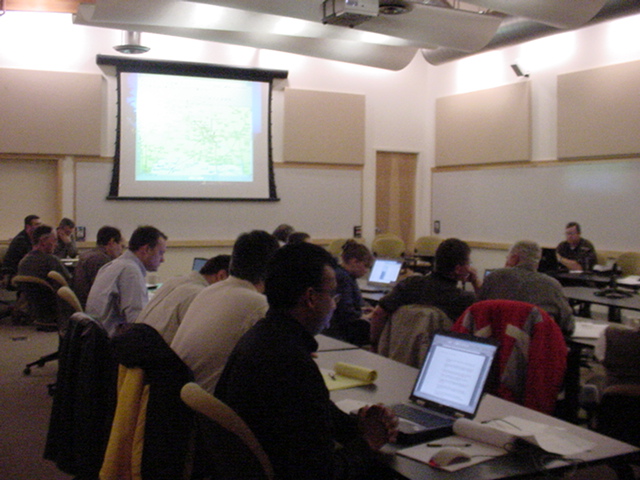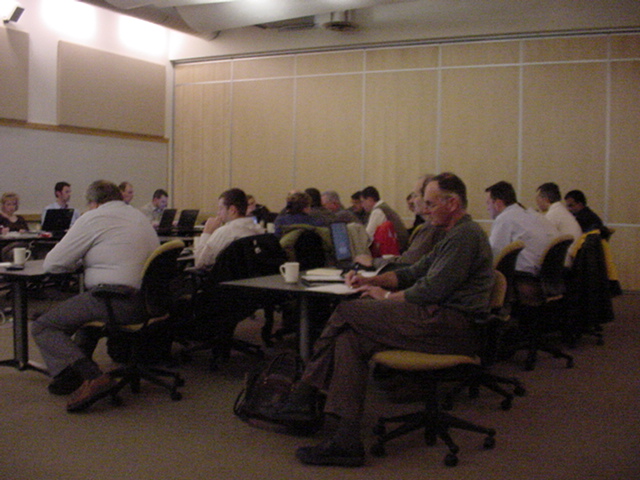MAPP NM-SPG = Transmission
November 30th, 2005

Today was the MAPP SPG meeting, I guess it’s technically MISO now, but everyone calls it MAPP. This is where it’s decided how to make the wishes of those with the power happen. There is a distinction between the policy promotion of transmission , i.e., whether we’ll have distributed and dispersed generation or central station power, and the technical problems such as overloads, impacts of connecting generation on the system as a whole. This group deals with the technical problems, calling them to the group’s attention and banding together to figure out a fix. In this respect, it is all connected. But because it’s all connected, this is also the venue where the policy doesn’t always agree with the laws of physics, yet engineering brains are trying to make it happen, yielding occasional “OH SHIT!” moments!
For example, today we talked about the “northern loop” problem, which is the 10% or so of the Buffalo Ridge wind energy that is shooting up to Dorsey, Montana, then over to the Forbes substation, and then down to the Chisago sub — by that time, given line losses, there’s probably nothing left! Here’s what the report says:
… it is observed that whatever transmission Option were implemented, approximately 4-5% of the SW Minnesota –> Twin Cities/Milwaukee power delivery flows northward to Manitoba on the Rugby-Glenboro and Letellier-Drayton 230kV lines, and then southward on the Dorsey (Riel) Roseau Co-Forbes-Chisago Co 500kV.
It’s 200MW over limits and gets worse as the level of export from North Dakota goes up. What to do? Well, they don’t quite know yet, but here’s what they’re looking at:
* Phase Shifting Transformers — VERY EXPENSIVE – $5-8 million
* Lower impedence of new 345kV line – solves problem by directing more electricity through 345kV line because more here = less there, and also decreases line losses on 345kV (no cost provided)
* Increase 500kV loadability – with capacitors, the rating could be increased over 400 MVA — also $5-8 million
This Manitoba wind problem is a good example of why it’s not very bright to be shipping electricity over long distances — there are so many variables to account for, and where we’re dealing with a generation source with a 41% capacity factor, and assuming at least 30% line losses before it gets to where it’s going, if everything goes right, this is about the least efficient and most wasteful way to supply electricity.
Here’s another example, imagine Mesaba, cranking away producing electricity. They put it on the line, and it goes out into the world toward a “sink” end point, and guess what?
The transfer analyusis indicated that, excluding pre-existing constraints, the proposed facilities would be limited to less than 90 MW in deliveries to Xcel Energy for the indicated sinks.
Translation – they’re sunk – they can’t get the power to the sink! To find this glorious sentence, go to the MISO queue and scroll down to project number 38280-01, the Mesaba project, and then scroll way right and click on X2.
Watching paint dry? I think not!

Leave a Reply